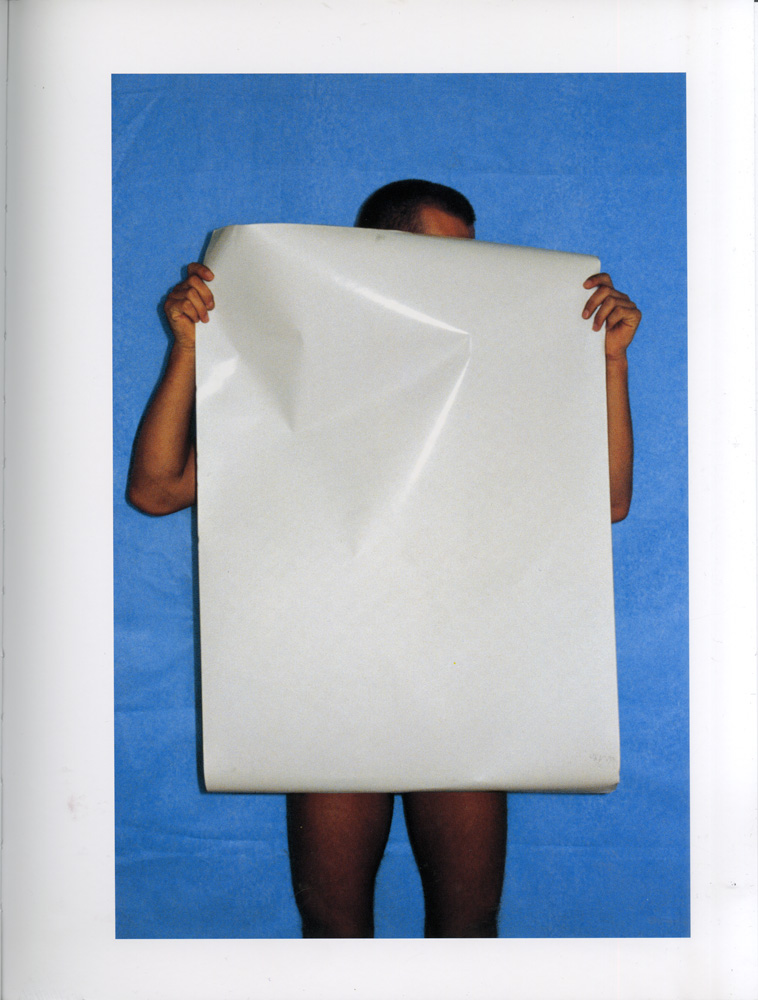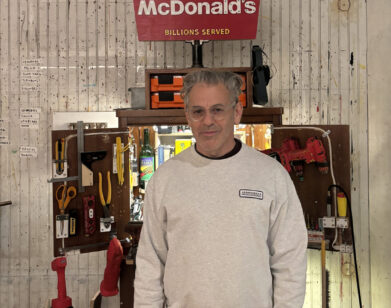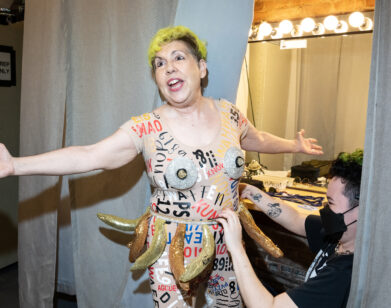In Love With Walter Pfeiffer
Since the 1960s Walter Pfeiffer has been regarded as a cult photographer, known for his homoerotic depictions of Zurich street life. He has carried on photographing (and making beautiful Technicolor films starring) beautiful men, beautiful flowers, beautiful whatever, pretty much on his own. It’s only recently that his portraits of friends and muses, his “beautiful people,” have been re-written into a historical narrative that spans the elegiac, autobiographical work of Nan Goldin and Peter Hujar. Walter Pfeiffer’s photographs are recognizable not just for the omnipresent flash or the off-kilter cropping, wherein each image pictures an event before and after it occurs. A young man smokes a cigarette seductively; another, a blond in a bathing suit, opens a stage curtain, or closes it. There’s a generosity and warmth in Pfeiffer’s imperfect beauty, but there’s also an enormous sense of drama, and energy—both created and consumed. In Pfeiffer’s words, “It’s not easy.”
Pfeiffer’s re-casting came first with a show at the Swiss Institute in New York, where he was paired with Tom Burr, and more recently, his retrospective at the Fotomuseum Winterthur, which showcased photographs, videos, and Pfeiffer’s vitrine displays from the 70s to the present. An eponymous catalogue, In Love With Beauty, was just released in partnership with Steidl. Pfeiffer shoots fashion editorial and ads now, but carries on as an underdog. He doesn’t like to leave Zurich; when he’s in New York you’ll find him eating at macrobiotic restaurants, shepherded from photo shoot to photo shoot by the handsomest young man in sight.
ALEX GARTENFELD: How are you doing, Walter?
WALTER PFEIFFER: I can’t laugh because I’m so sick. I came back from Egypt, so I thought it was hot and I went sunning. But I went on the boat and then it was so windy and cold, and I got the flu… like never before.
AG: You have to be careful.
WP: And I have to go to Paris next week for French Vogue…
AG: You are doing editorial during the shows?
WP: They want me to shoot Sam Webb at the Plaza Athénée, because I did my first shoot for them one month ago. They called me to do something for Vogue Homme and I had a model in this wonderful hotel and it came out so wonderful that they said, “Wow, we didn’t know him before but Wow, wow, wow!” Now they want me for the real Paris Vogue in the hotel Meurice with Eva Herzegova. It will come out in May.
AG: That’s a beautiful magazine. Congratulations. (LEFT: COVER OF IN LOVE WITH BEAUTY)
WP: You know, I never thought I’d be able to do things like this. I dreamed about it in my youth, and they laughed at me when I was in art school. I was always in the library going through old Harper’s Bazaar from the 1940s, 50s, 60s. They would ask me, “What are you looking at?” And I would tell them, “All those beautiful pictures.”
AG: Things have changed. You stayed the same but everyone else has changed.
WP: I’m not changing but maybe I didn’t improve even. Well, I do color. I don’t even take digital.
AG: I’ve seen you take photos with just your little camera.
WP: Yes, you saw it! I’m everything. I’m the stylist. I’m the hair man. I’m a one man band.
AG: Do you have a cute assistant?
WP: If I want one, and if they ask me if I need an assistant. In Paris I took one—but I take a girl because otherwise I get too nervous.
AG: What’s the first photo you took?
WP: It was a group photo, I had a small Polaroid, which was very cheap. I took photos and blew them up and drew them. That’s why I started taking photographs, as a way to inspire my drawing. Later a friend of mine who was a real photographer encouraged me. I arranged a group sitting of my friends, the most beautiful people in the town. I was shaking and I was so nervous—that’s why I always used a flash. My hand always shakes from nerves, but I hate putting [the camera] on a tripod. Anyway I arranged for this picture, and my friend took the photos and then I said, “Give me the camera!” It was very strange because in my pictures everyone looked so beautiful, but in his pictures the people were not. You could see the difference. I loved them. I love to arrange people and to direct them.
AG: It must have been hard to get into photography if your hand was always shaking.
WP: I always used flash so it was always sharp. But that is why they hated my photographs in the beginning because I came from a time when the real great photographers took really great black and white things. Did you know that Interview is my dream magazine? In 1980 when I was in New York, Andy was my hero. He still is.
AG: Did you ever meet Warhol?
WP: Yes, just once when he had a book signing at a department store on Madison Avenue. It was a book about the 60’s and I’m a child of the 60’s. I brought a newspaper clip with me in it, but he came very late. I had to wait for like an hour.
AG: What a diva!
WP: A super diva I thought. And once I saw him from afar in Studio 54.
AG: Did you go to Studio 54 a lot?
WP: Yes.
AG: Did you love it there?
WP: Yes.
AG: Were you in NY a lot?
WP: No, the first time I won a prize so I could come to New York for a year. You would have a studio and they pay you a certain amount, not too much. That was the first time I came to America. That was a long time ago in the 80s for a year.
AG: What was your favorite thing about Studio 54?
WP: Bianca Jagger was here in Zurich for the Locarno film festival, which happens every year. It was in the 70s, and Bianca was on the Jury. I had done the poster for the festival because I started as an illustrator. That was my first career before I started with photography.
AG: I didn’t know that.
WP: I remember that I went with Bianca in her room and she changed clothes. I asked, “Why don’t you wear this?” and she listened to me. That’s all I remember. I was very insecure then.
AG: What did she wear?
WP: A wonderful yellow dress with black. She was very young.
AG: Has your book come out officially yet?
WP: Yes. Did you see it? It won a gold metal already. Yes, the most beautiful book of the year, really! It’s chosen by a jury of the most beautiful books in Switzerland.
AG: That’s perfect because it’s called In Love With Beauty. They might very well be in love with you.
WP: Nobody’s in love with me. I’m so sorry.
AG: For you is there any difference if you shoot someone for an art exhibition and if you shoot someone for fashion?
WP: I love to work, and to make all kinds of work. But if I work on a fashion story then I work for somebody. If I work for me, for an art project, then I’m not that nervous. It doesn’t matter when the photo is done. And if I work on a fashion shoot, then I have access to all these things that I can use later for my art—a still life here or there. I can do all of this while the model is changing.
AG: Do you always take pictures with models? Do people respond to the work differently now?
WP: Things changed a little when I started taking photographs for magazines. I was afraid in the beginning. I thought, “Oh I can’t do it, because I have never taken a photographs commercially for a magazine.” But I wanted to learn so I started. But when I took models from agencies, I took beginners. Sometimes they were really good, but you have to work with them. You have to be good with women and the boys.
AG: Where people ever shocked by your photographs, especially the portraits of boys?
WP: Yes, in the beginning with the first book. This is the most famous book of all. It’s all in black and white. It’s just called Walter Pfeiffer, 1970-1980. It was very early for a book like that with just photos. No one wrote about this book.
AG: How do you make people feel natural for your photos?
WP: I take myself back and let them forget that I am here. I try to seduce them and they forget that they are posing. Maybe. I tell them a story or something. Nothing too deep, just some superficial stories about myself.
AG: Stories how you met Andy Warhol at a store.
WP: Stories about how I always looked up at Warhol’s building in Union Square and I always wanted that life. But I was too young and I thought, “I can’t go there.”







